Did you know your lawn might be draining more than just your time? For the average American household, nearly 30% of water use goes straight to the yard—and in drier states, that number can skyrocket to 60%. With the typical family spending over $1,000 a year on water, thirsty landscaping can take a serious toll on your wallet and the environment.
Luckily, you don’t have to choose between a beautiful yard and a smaller water bill. With a few smart landscaping strategies, you can save gallons of water, reduce your utility costs, and still enjoy a lush, vibrant outdoor space. Let’s look at easy, effective water-wise ideas that are perfect for your yard.
Water Conservation Landscaping Ideas

Image Credit: Shutterstock.
Water-saving landscaping looks different depending on where you live and how much rainfall you receive. For some, it may mean using fewer, more drought-resistant plants and getting creative with other features like rock gardens. Others may need to focus more on erosion control or adjusting mowing techniques.
As a long time gardender, I’ve gather tips from my own experience and local gardeners. The following insight will help you come up with a plan that works best for you.
1. Plan and Design Landscaping to Conserve Water
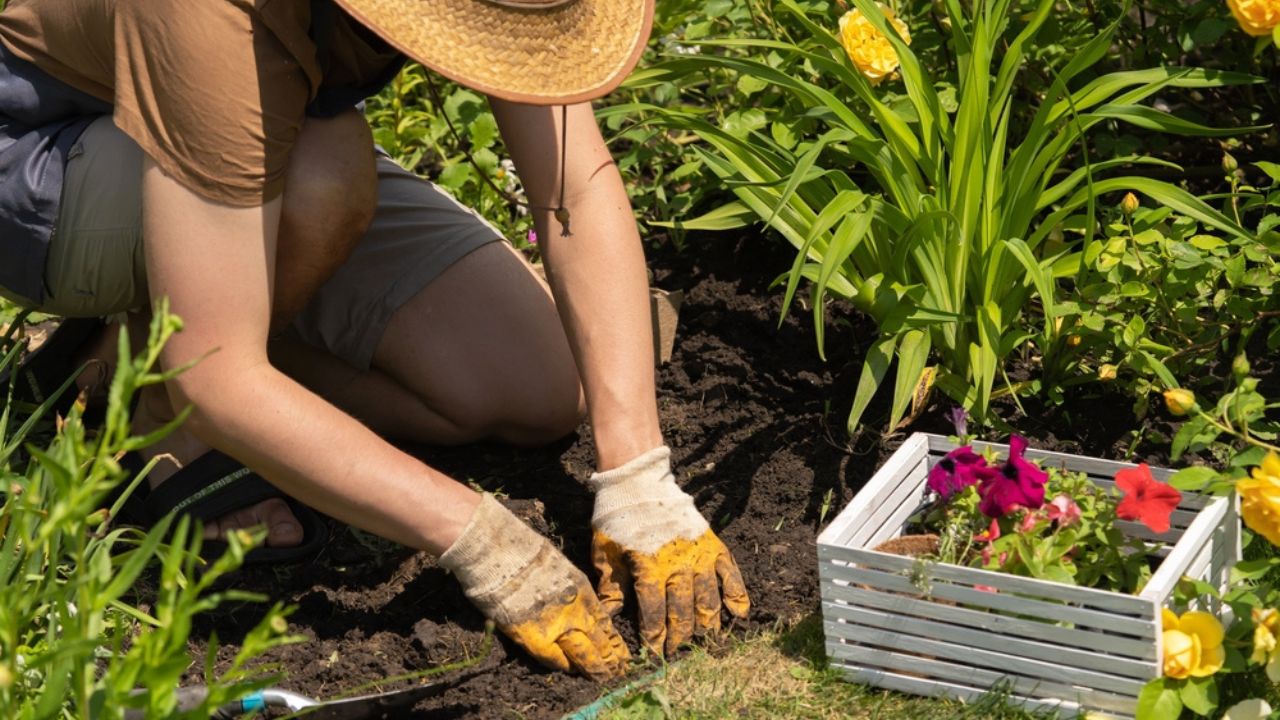
Image Credit: Shutterstock.
Plan your water-saving landscape design by working with nature rather than fighting against it. Take inspiration from the surrounding natural landscape and observe how water interacts with your yard.
What types of plants thrive naturally in your area? In which direction does water run through your yard when it rains, and where does it tend to collect? Think also about how you use or want to use your outdoor space and how all of these factors might fit together.
You might want to turn some of your outdoor space into an edible landscape to get more use out of it as well.
2. Minimize Lawn Space and Mow Smart
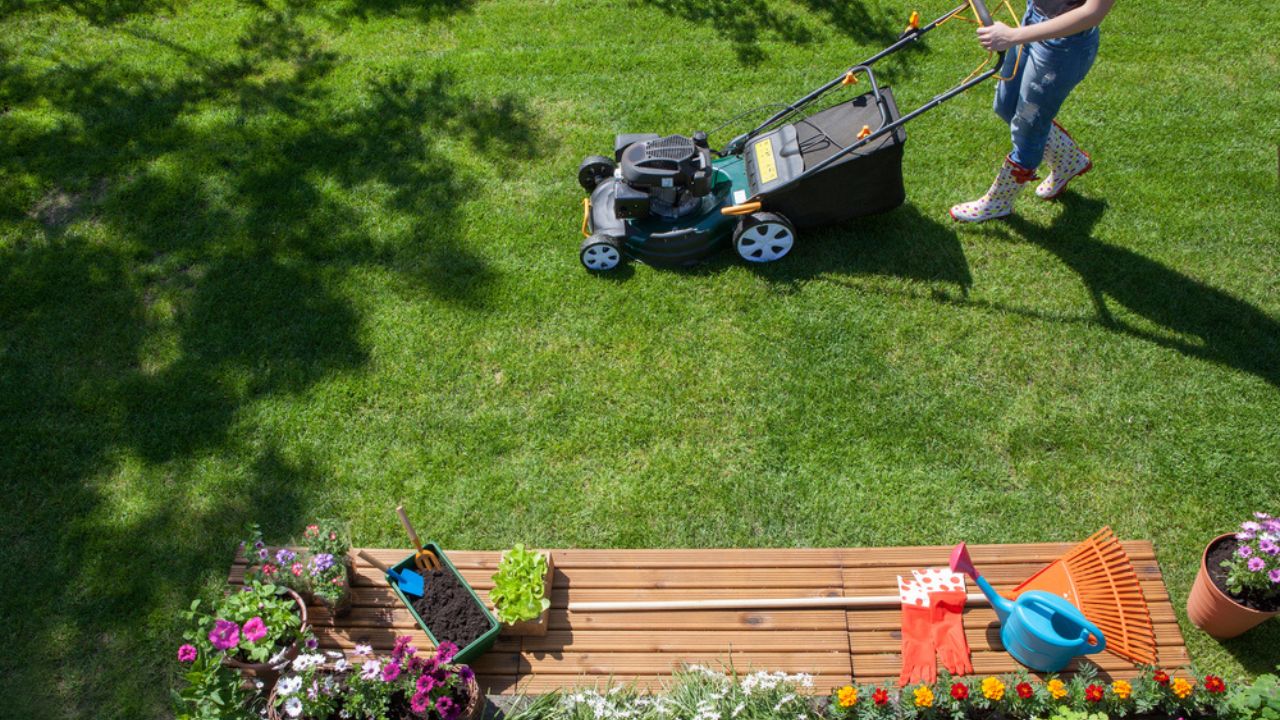
Image Credit: Shutterstock.
Lush, green lawns use up an enormous amount of water, energy, and time. If you have a large lawn, consider reducing it to only the size you need: perhaps your kids usually play in one section of it, or you just need a small patch for the dog. You might find that you don’t even need a lawn at all!
With the grass that you decide to keep, you can adjust your maintenance to reduce water usage. Set the mower blade higher to promote root growth and allow longer grass blades to shade each other, thus creating a more drought-resistant lawn. Additionally, grass clippings provide a good source of natural mulch and fertilizer, so leaving them where they fall also helps keep the lawn lush with less water.
If you have yet to plant a lawn, look for varieties of grass native to your area, which require little to no irrigation or fertilizing since they’ve adapted to your local soils and climate. Check with your local Cooperative Extension Office for recommendations on which types to choose and how to plant and care for them. A few popular examples include red fescue, seashore bentgrass, St. Augustine grass, and buffalograss.
3. Use Mulch to Save Water and Improve Soil Health
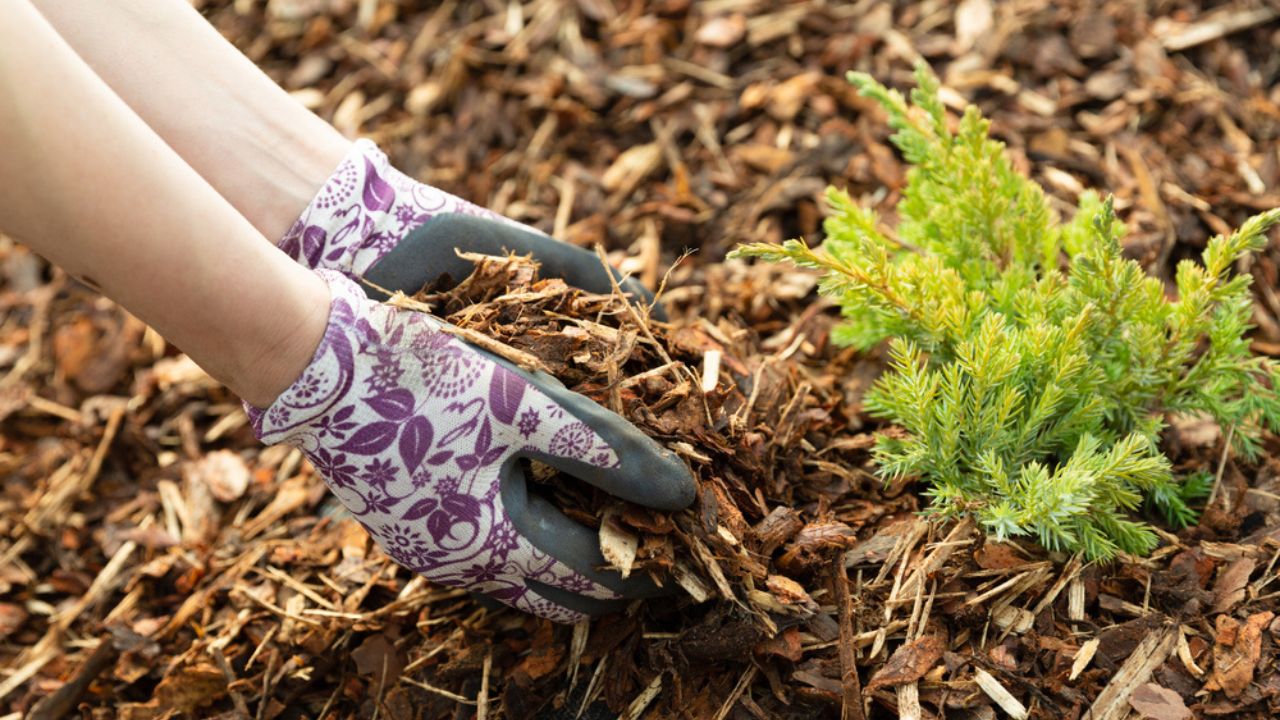
Image Credit: Shutterstock.
Speaking of mulch, layer it liberally (three to four inches deep) around all of your plants to help retain moisture and improve the health of the soil. Mulch also inhibits weed growth, moderates soil temperature, and prevents erosion.
Choose the type of mulch based on your varieties of plants and where they are located. For example, rock mulches should not be used around non-arid climate plants or in sunny areas, since they radiate heat and increase evaporation. Organic mulch options include wood chips, pine needles, straw, leaves, and grass clippings. These decompose over time, adding nutrients to the soil.
4. Use Soil Amendments Where Appropriate
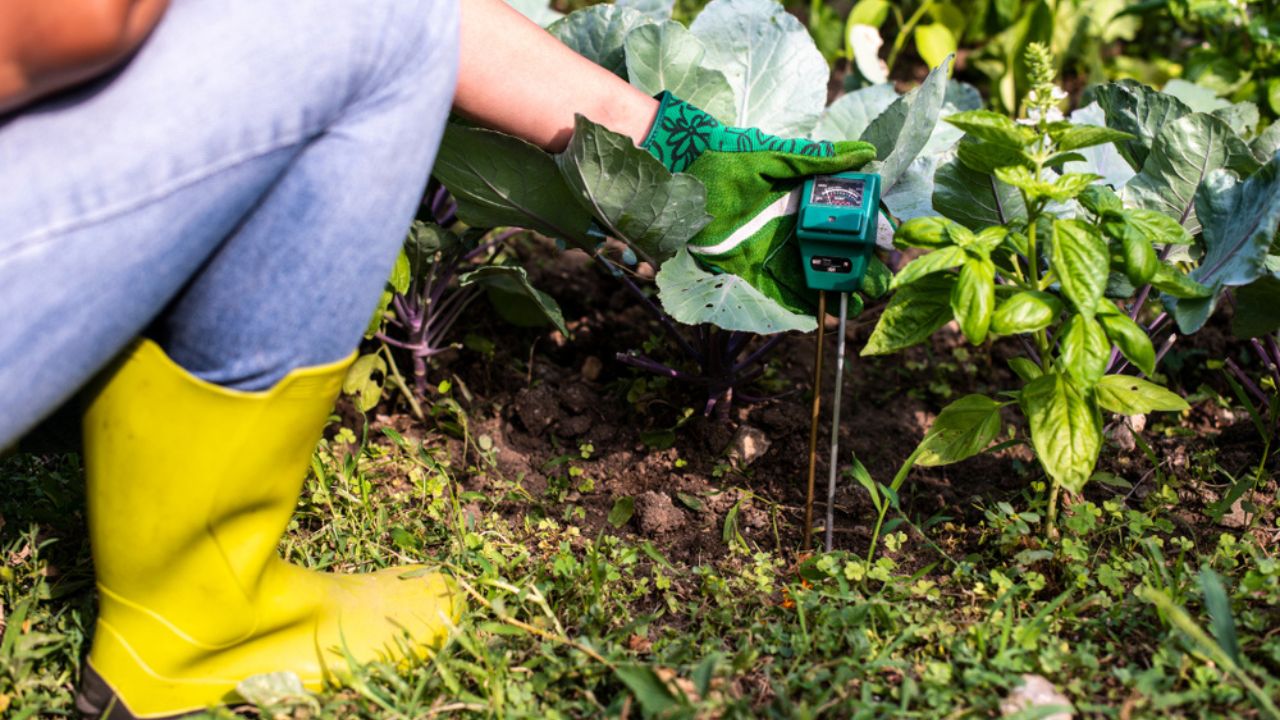
Image Credit: Shutterstock.
Many gardeners and homeowners mistakenly thing a poorly thriving yard or plants is due to lack of water when it can be due to soil quality. On the other hand, overwatering can invite a plethora of problems and diseases as well.
Healthy soil leads to healthy plants by providing necessary nutrients and retaining water. Contact your local Cooperative Extension Office for a soil test kit or service to determine your soil’s pH, nutrient levels, composition, and organic matter content.
Once you have the results, you can add the appropriate amendments and choose plants best suited for your soil.
5. Use Native and Drought-resistant Plants in the landscape

Image Credit: Shutterstock.
Native plants are often the best to plant in your garden because they are adapted to your local environment and, thus, rarely require fertilizer or treatment for pests and diseases. Once established, they typically need little irrigation beyond normal rainfall. They also attract and benefit native birds, butterflies, and other beneficial wildlife.
Use a mixture of trees and shrubs for shade and ground cover to help prevent erosion and weeds, as well as perennial flowers and grasses for bursts of color and varied texture. Some excellent native varieties, depending on your location, include:
- northern maidenhair fern (East)
- Catalina cherry tree (California)
- little bluestem grass (Midwest)
- spicebush (East)
- needlegrass (West)
- Parry’s penstemon flower (Arizona)
- white sage (Southwest)
- Indian paintbrush (West)
Nonnative drought-resistant plants can also work well in a water conservation garden. Just make sure to avoid potentially invasive species, which displace native plants and may actually require more water and other inputs. “Mediterranean-zone” plants are wonderfully efficient plants that have adapted to long, dry summers and short, rainy winters. Here are a few ideas for Mediterranean and other drought-tolerant plants.
- lavender
- agave
- blue hibiscus
- rockrose
- hens and chicks
- sedum
- sweet bay tree
- ice plant
6. Stabilize Steep Slopes
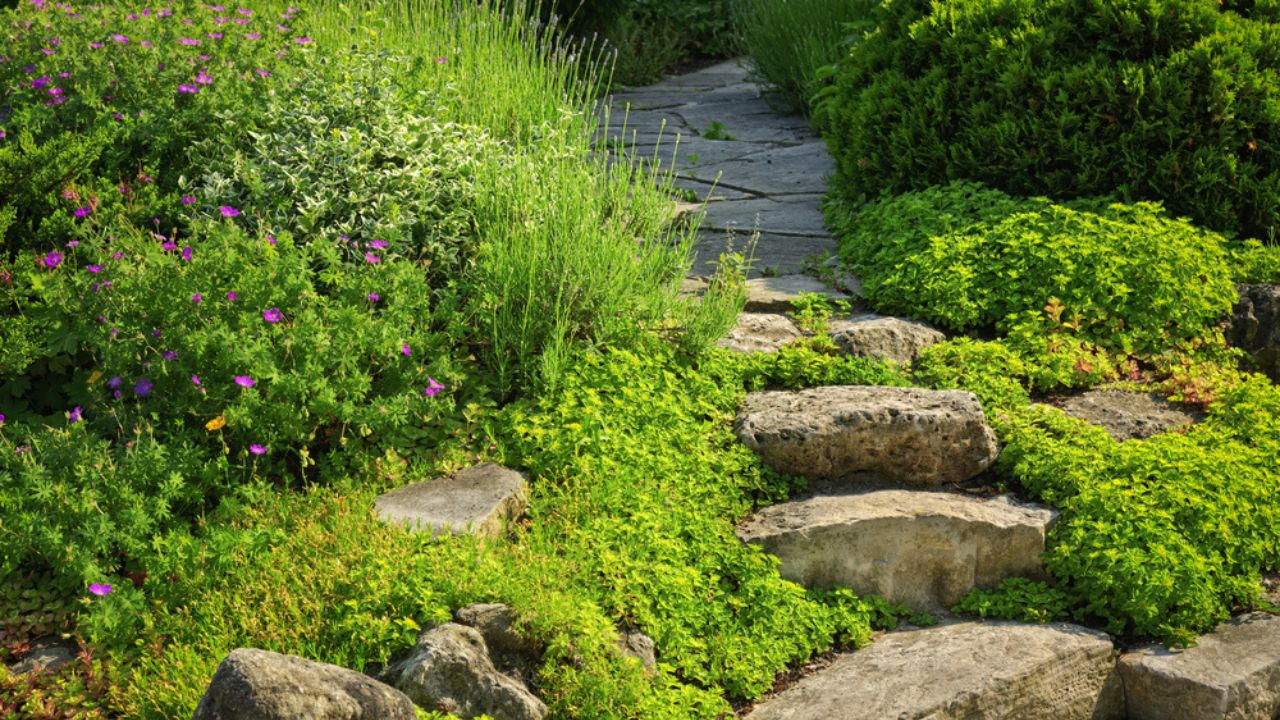
Image Credit: Shutterstock.
Steep slopes often have problems with erosion and runoff. To help capture water instead of allowing it to wash away all of the topsoil and nutrients, make a plan to stabilize any steep slopes on your property.
One of the best ways to do this is to plant native ground covers and shrubs with deeper root zones that will hold the soil in place. Other hillside landscaping options include terracing, barriers, or riprap.
7. Plant a Rain Garden
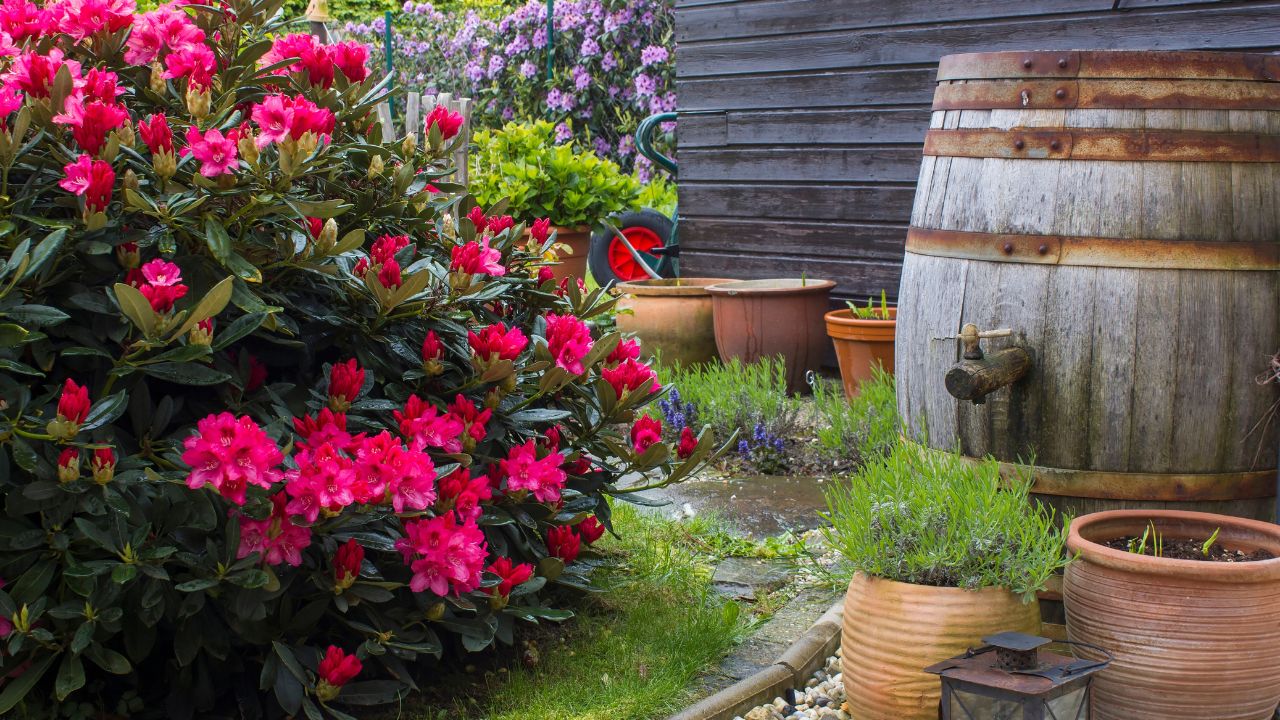
Image Credit: Shutterstock.
Rain gardens help capture and soak up stormwater runoff and filter pollutants. The plants also attract birds, butterflies, and other native wildlife. To install a rain garden, choose a flat or gently sloped area at least ten feet from the house.
You’ll need to dig out eight to nine inches of soil from the chosen site, creating a gentle slope if it’s flat or a berm if it’s already sloped. If the exposed soil is compacted or lighter in color than the removed topsoil, add a bit of compost before planting. Stones or river rock placed around the edges will help dissipate water flow, especially if you have pipes or gutters flowing directly into the rain garden.
Choose grasses, shrubs, and flowering perennials that tolerate both wet and dry conditions; native varieties tend to work best. Plant those that prefer wetter conditions toward the bottom of the rain garden and those that do better in well-drained soils along the edges. Following are some recommended plants for rain gardens:
- red or black chokeberry
- blue-flag iris
- sweet fern
- butterfly weed
- red-twigged dogwood
- purple coneflower
- lowbush blueberry
- New England aster
- cardinal flower
- buttonbush
8. Install a Rain Barrel
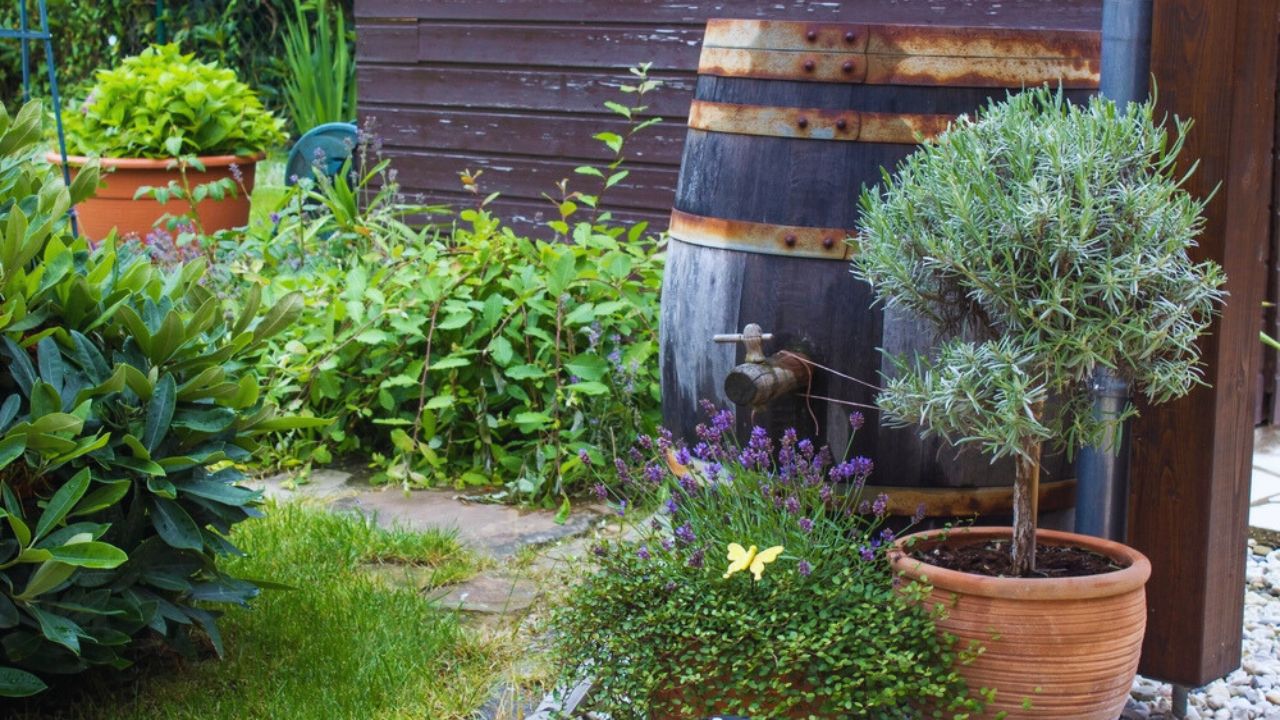
Image Credit: Shutterstock.
Purchase or create a rain barrel to collect water from the roof of your house or outbuilding to use for watering plants. Place the rain barrel against a corner of the building that already has a downspout or rain chain, and simply divert the downspout or chain into the barrel.
Cover the barrel with mesh to prevent critters from falling in or mosquitoes from breeding there. The spigot at the bottom of the barrel can be used to fill a watering can for potted plants or smaller beds.
Or, you can place the barrel on a raised wooden stand or stacked cinder blocks and attach a hose for gravity-fed irrigation. This works especially well with multiple barrels or a larger collection tank.
9. Use Smart Watering Practices

Image Credit: Shutterstock.
When planning how to fill your garden beds, group plants with similar watering needs as much as possible, so irrigation isn’t wasted on plants that don’t need it.
For the plants that do require irrigation, water them only when they need it, watching for signs of dehydration or overwatering and adjusting your watering schedule accordingly. You can also set up a drip system or soaker hose to ensure water is only going where its needed: the roots.
Never water in the middle of the day, when the hot sun quickly evaporates the water meant for your plants. Instead, irrigate only in the morning or evening to give the plants time to soak up the moisture. Water at the base of plants to prevent water from evaporating off the leaves or even before it hits the plants.
When using sprinklers, ensure they aren’t spraying sidewalks or driveways instead of plants. Choose efficient WaterSense-labeled sprinklers, and check the system regularly for leaks. And of course, remember to turn off any timer-run sprinklers if you’ve recently received rain and the garden doesn’t need additional watering.
10. Create a Rock Garden

Image Credit: Shutterstock.
If you live in a drier climate like the desert Southwest, consider creating a beautiful yet practical rock garden. These low-maintenance gardens integrate rocks and extremely drought-tolerant plants like succulents, alpine ground covers, hardy ornamental grasses, and high-elevation wildflowers.
Select similar rocks of varying sizes and shapes to place tastefully around the chosen area in random groupings, and use plants to accent the landscape with subtle hints of greenery and bursts of color.
Rock gardens are also beautiful additions to other styles of gardens. You can transform existing rock ledges from eyesores to beautiful garden beds, bring rocks to define borders or help stabilize a slope.
Boulders of all sizes look beautiful next to ponds and other water features. Plant ferns and hostas in woodland rock gardens or cacti in sunnier spots – even New England has a native prickly pear cactus! Tuck crevice-loving plants like hens and chicks or creeping thyme into a stacked stone wall in the front yard for natural curb appeal.
FAQs About Water Conservation Landscaping
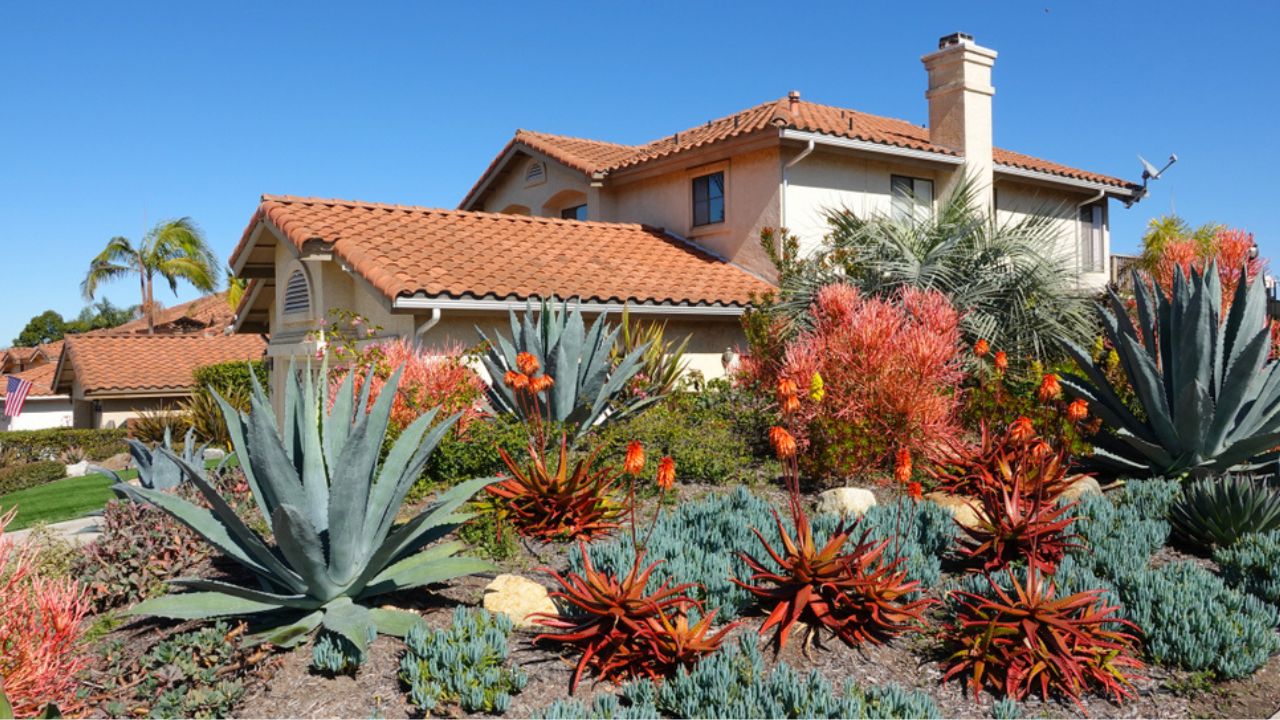
Image Credit: Shutterstock.
How do you install desert landscaping?
Choose native or well-adapted, noninvasive desert plants like agave, mesquite, lavender, and yucca. Group them according to water needs, and plant trees in low areas to ensure water flows toward them.
The type of mulch used should correspond to the types of plants selected. While desert natives with finer leaves grow beautifully in gravel, those with larger leaves require more organic matter and will appreciate shredded cedar or cypress mulch.
Other ground cover options include beach pebbles, crushed gravel, river rock, or decomposed granite. Use boulders of varying sizes as accents and flagstones for garden paths.
How do you take care of desert landscaping?
Do some research about your chosen desert plants to learn about their individual water needs. If you followed the advice above, you will have planted them in convenient groupings according to their water requirements.
Water only those plants that need it, and have a drip irrigation system installed if you don’t have time to water by hand.
Finally, weed regularly and thoroughly to prevent weeds from hogging all of the water and nutrients.
How can you make desert landscaping beautiful?
Choose plants of varying heights, colors, and textures for greater depth and visual interest, and place taller plants toward the back of the bed (or center for those that can be walked all the way around). Arrange rocks and dry branches sparingly and naturally.
For an extra pop of color, use bright decorative pillows on your outdoor furniture, place a few colorful ornaments throughout the garden, or paint the garden fence.
Whether you live in the desert Southwest, the verdant East, or somewhere in between, I hope you have gleaned some helpful water conservation tips from this post of landscape ideas. Implementing a few simple changes can save water, lower costs, beautify your garden, and contribute to a greener world.

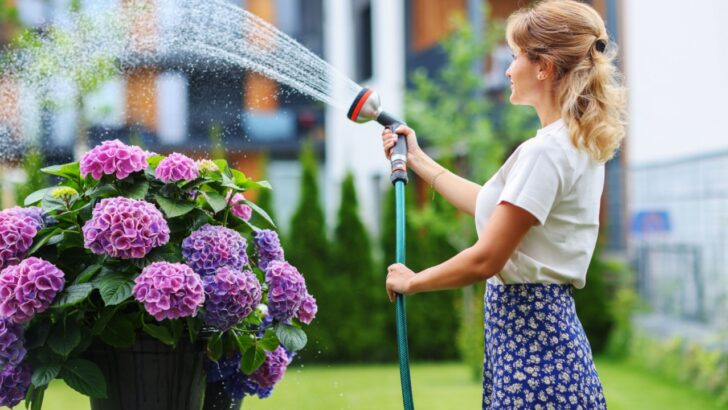

Celebrate National Public Gardens Day This Mothers' Day Weekend
Tuesday 4th of May 2021
[…] day honors the roles that public gardens play in promoting green living, sustainability, plant and water conservation, and healthy outdoor […]
Best Landscaping Ideas For Your Home
Thursday 11th of February 2021
[…] Creative Water Conservation Landscaping Ideas for a Greener Yard […]
How To Conserve Water In The Garden
Friday 30th of October 2020
[…] Check out these water conservation landscaping ideas. […]